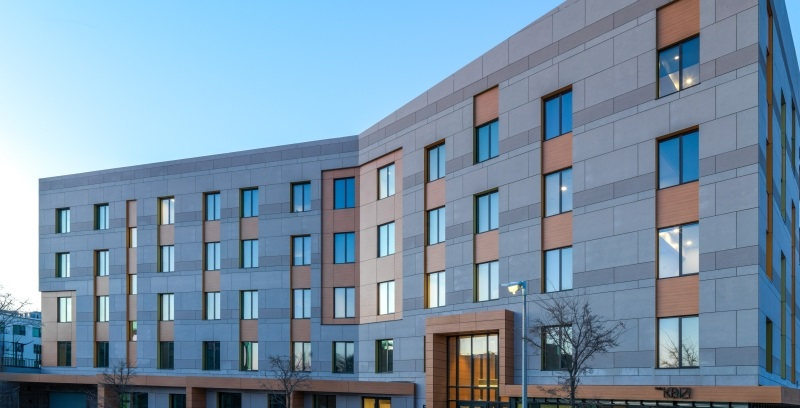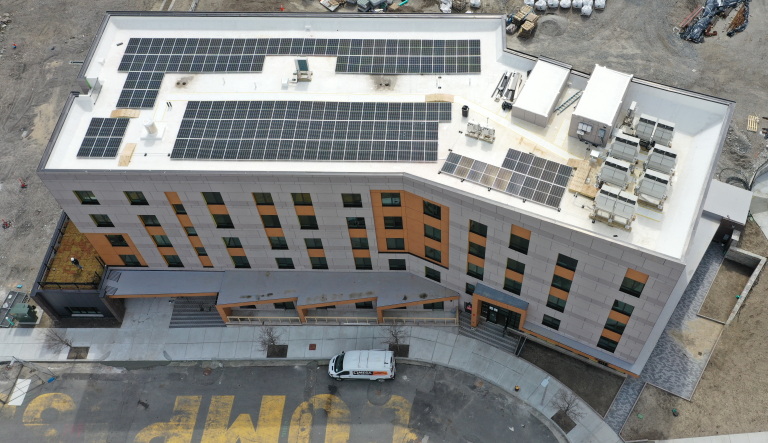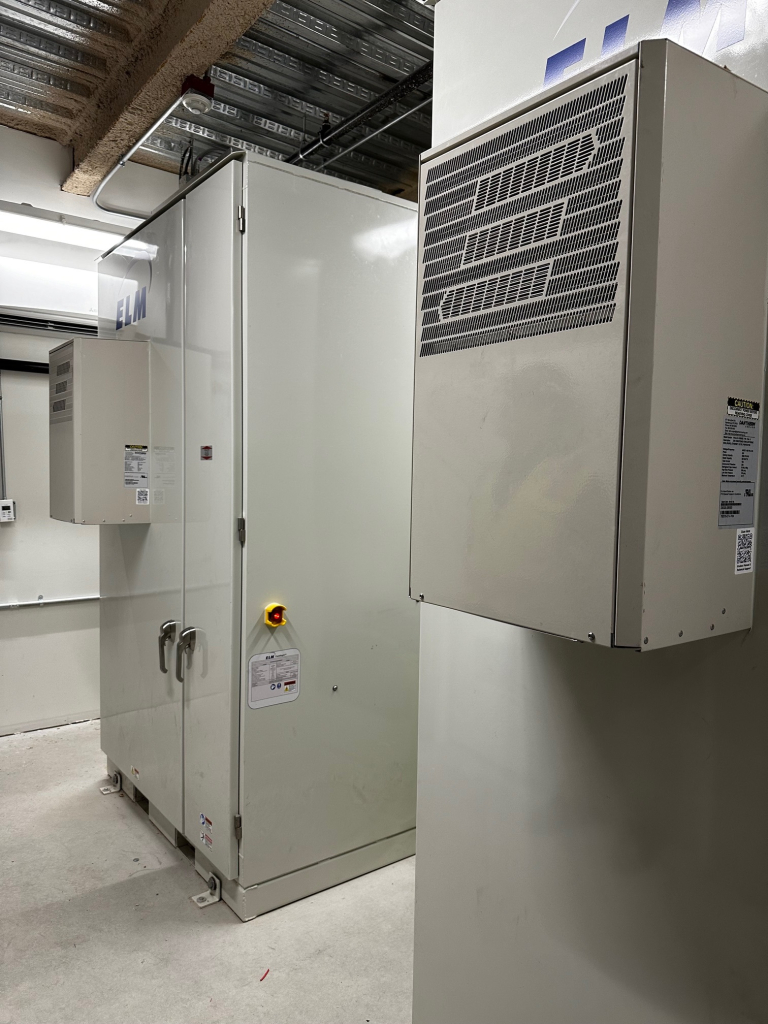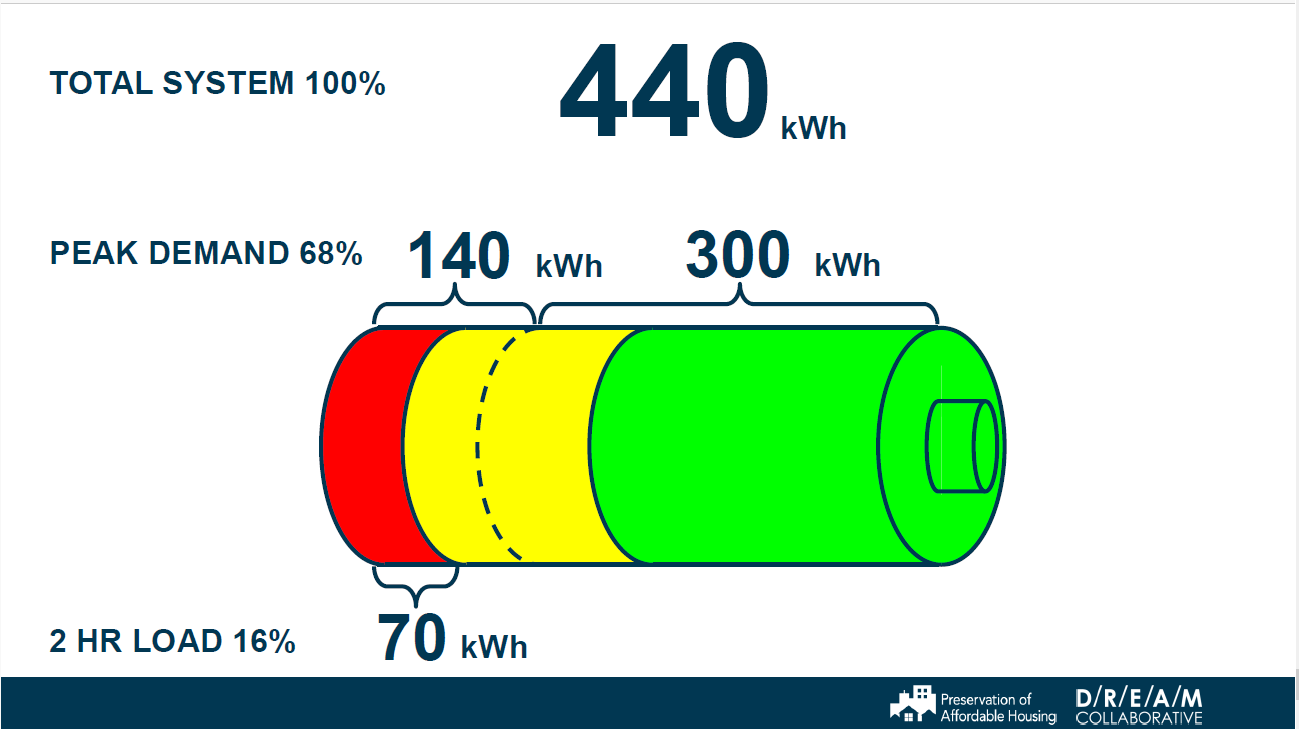
MassCEC is helping to develop examples of fossil fuel-free multifamily buildings, to show that it’s possible to construct buildings that don’t use fossil fuels on-site. Unfortunately, going 100% electric is still difficult in many municipalities. Even very-low-energy buildings with electric heating and cooling systems, like Passive House certified buildings, typically still use fossil fuels on-site for hot water heating and emergency backup generators. The Kenzi, a fifty-unit housing project in Boston, provides a model for how multifamily buildings can succeed in getting emergency battery back-up approved by local Fire and Inspectional departments.
Building Code Requirements at the Kenzi
The Kenzi is a Passive House, age-restricted affordable housing project developed by Preservation for Affordable Housing (POAH) in the heart of Boston's Roxbury neighborhood. It is also the first all-electric building of more than four floors in the City of Boston. Building codes in Massachusetts require multifamily buildings over four stories to have emergency backup systems. During power outages, these systems kick in to power things like stairwell lights and elevators, ensuring residents can safely leave the building. Due to concerns about new technology, however, owners and code officials are wary of taking on the challenge of switching from fossil fuel backup generators to Battery Energy Storage Systems (BESS).
To demonstrate how a BESS can be code-compliant in Massachusetts, MassCEC provided a one-time grant of $250,000 to POAH. The grant allowed POAH to upgrade the emergency backup system at the Kenzi from a fossil fuel generator to a BESS paired with solar. The project serves as a case study and guide for how design teams in other jurisdictions can propose solar that includes a mandated minimum reserve of battery power for emergency services to their Fire and Inspectional Services agencies.
The Process of Getting Permit Approval
Originally, the building was designed to meet code with a diesel-fueled backup generator. After POAH secured financing, they began exploring whether a BESS, paired with their solar installation, could be used instead of the generator. Over 9 months, POAH, along with its architect, code consultant and electrical engineer, met regularly with the City of Boston’s Inspectional Services Division (ISD) and Boston Fire Department (BFD) to secure approval for their BESS. When it received final approval, the Kenzi became the first known example in Massachusetts where an all-electric system was approved to replace a fossil fuel generator in a multifamily building.
In coming to an agreement with the City of Boston on the emergency power protocols, POAH had to demonstrate inclusion of:
- A building management system (BMS) that provides communication between the building's fire alarm system and the battery
- An emergency operations plan in the case of fire alarm signaling
- Clear signage for the location of the remote battery shutoff
- A specialized sprinkler system
The System and Operations Agreement
The Kenzi has a 65 kW rooftop solar array and a battery with a total capacity of 440 kWh. The agreement with the Boston Fire Department (BFD) requires that sufficient stored energy be available for all emergency loads (lights, fire alarm, and elevators) for at least two hours in the event of a power outage. Additionally, POAH elected to increase the stored energy to power a community resilience center in the building. This is an area of the building that provides emergency phone charging, HVAC, and refrigeration for medications. Effectively 70 kWh, or 16% of the battery capacity, will always be reserved for emergency back-up power. The reserved emergency power is safe-guarded by the BMS.
In the image below, the red portion of the battery represents code-required emergency loads. The dotted line in the yellow band shows the safety margin requested by BFD, 140 kWh total for emergency use. The remaining power (represented by the yellow to the right of the dotted line and the green) is available to the community resilience center and offsetting peak demand.



To learn more about how the team permitted the first emergency BESS, contact info@dreamcollaborative.com.
Project Partners
Developer: POAH (Preservation of Affordable Housing)
Architect: DREAM Collaborative
Code: JS Consulting Engineers, LLC
MEP Engineer: Petersen Engineering Inc.
Civil Engineer: Devellis Zrein Inc.
Structural Engineer: RJ Farah
Landscape Architect: Deborah Myers Landscape Architects
Passive House Consultant: Building Evolution Corporation
PHIUS Verifier: CLEAResult
PV: Sunbug Solar a ReVision Energy Company
Battery: Current Storage Solutions
Contractor: NEI General Contracting